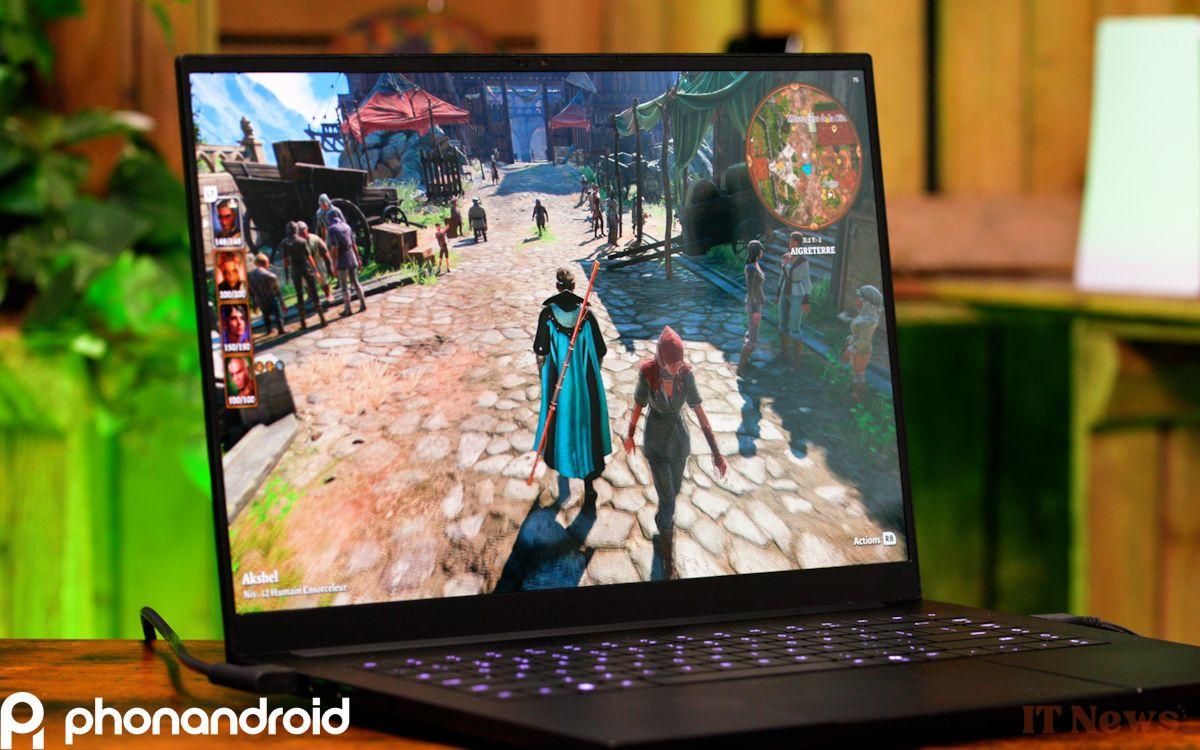The RTX 5090 for laptops offers half the performance of the desktop RTX 5090. But it also consumes almost four times less power.
The first laptops equipped with an RTX 50 graphics card are starting to arrive on the market, giving us the opportunity to compare their performance to that of desktop models. It is clear that laptop graphics cards cannot reach the level of power delivered by the desktop versions, but it's still interesting to get an idea of the real difference, especially for consumers who might be hesitating between investing in a gaming tower or gaming laptop.
NotebookCheck shared benchmark measurements that leave no room for doubt: the gap is significant. On 3DMark, a Razer Blade 16 2025 (RTX 5090, AMD Ryzen AI 9 HX 370) is 51% less efficient than a configuration with a desktop RTX 5090 and AMD Ryzen 7 9800X3D processor. The Asus Strix Scar 18 2025 (RTX 5090, Intel Core Ultra 9 275HX) is even lower, showing 75% lower performance.
The portable RTX 5090 is much more energy efficient than the desktop RTX 5090
On Cyberpunk 2077 2.2 Phantom Liberty, the desktop PC with RTX 5090 achieves 257 frames per second in High quality and 1080p definition, compared to 118 fps (-54%) for the Razer Blade 16 2025 and its portable RTX 5090. In 4K Ultra, we see a difference at roughly similar: 113 fps for the desktop device and 51 fps (-55%) for the mobile device.
When comparing the prices of the configurations, this power deficit of the RTX 5090 can seem problematic. But we know that it is very complicated to combine compactness and performance, and manufacturers make us pay dearly for these premium machines. If we instead take the relationship between energy consumption and performance, however, the portable RTX 5090 performs well. Its TGP is limited to 150 W, almost four times less than the monstrous 575 W TGP of the desktop RTX 5090.
From this point of view, we can consider that Nvidia fulfills its part of the contract. We have an integrated graphics card in a laptop that is certainly half as powerful, but which also consumes four times less than its desktop counterpart. We can still criticize the manufacturer for having opted for the commercial name of portable RTX 5090, while the graphics card includes a GB203 GPU that is found in the desktop RTX 5080, adding to confusion.
Source: NotebookCheck




0 Comments